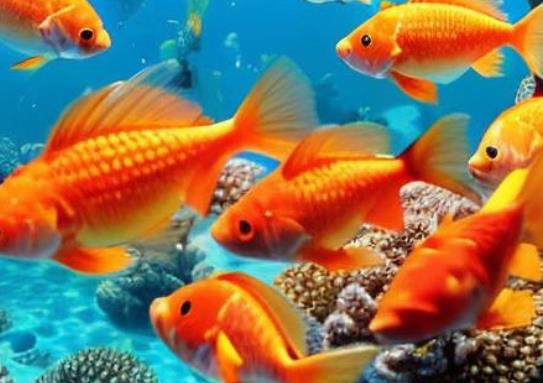Caring for goldfish requires providing a suitable environment, a reasonable diet, and regular maintenance. Here are detailed guidelines:

1. Fish Tank Selection and Setup
Tank Size: Goldfish need ample space to move. It is recommended that there be at least 1 liter of water for every 1 centimeter of the fish's body length (adult goldfish are about 10-15 centimeters long and require more than 30 liters of water).
Water Quality Management:
Filtration System: Install a filter (top filter, external filter, or internal filter) to keep the water clean and reduce the frequency of water changes.
Water Temperature: Maintain the temperature at 18-24°C (tropical goldfish can tolerate slightly higher temperatures) and avoid drastic fluctuations. A heater is needed when the temperature drops below 10°C in winter.
Water Changes: Replace 1/3 of the water every week. Use tap water that has been left to stand (to remove chlorine), and ensure the temperature difference does not exceed 2°C.
Decoration: Use bottom sand or objects without sharp edges. Provide hiding places (such as earthen pots, aquatic plants) but avoid overcrowding that hinders swimming.
2. Scientific Feeding
Food Types: Specialized goldfish feed (pellets/flakes), frozen bloodworms, water fleas, etc. Avoid bread crumbs (they easily pollute the water).
Feeding Frequency: Feed 1-2 times a day, and it is best if the fish finish eating within 5 minutes. Juvenile fish can be fed small amounts multiple times, while adult fish should have a reduced feeding amount.
Precautions:
Observe if the fish are active before feeding to avoid overfeeding, which can lead to indigestion.
Clean up leftover food in time to prevent water quality deterioration.
3. Health Monitoring
Common Diseases:
White Spot Disease (prone to occur at low water temperatures): Raise the water temperature to 28-30°C and add salt for treatment.
Rotten Tail/Rotten Fin: Isolate the sick fish and bathe it in yellow powder or antibiotic solution.
Gasping at the Surface: This may be due to lack of oxygen or ammonia poisoning. Check the filter and change the water.
Daily Observation: Pay attention to whether the fish's body has congestion, cloudy eyes, or abnormal gills, and handle them promptly.
4. Other Key Points
Avoid Mixed Breeding: Goldfish are prone to injury when kept with tropical fish or aggressive species.
Lighting: Provide 6-8 hours of light per day (natural light or LED lights) to promote health but avoid algae blooms.
Breeding Period: If the fish lay eggs, provide aquatic plants for the eggs to attach to, and remove the parent fish to prevent them from eating the eggs.
5. Mistakes to Avoid
✖ Frequent water changes or excessive temperature differences.
✖ Feeding human snacks (such as rice, biscuits).
✖ Placing the fish tank in direct sunlight (prone to algae blooms).
With a stable environment and careful observation, goldfish can live for more than 10 years. Regular maintenance is the key to their longevity!
